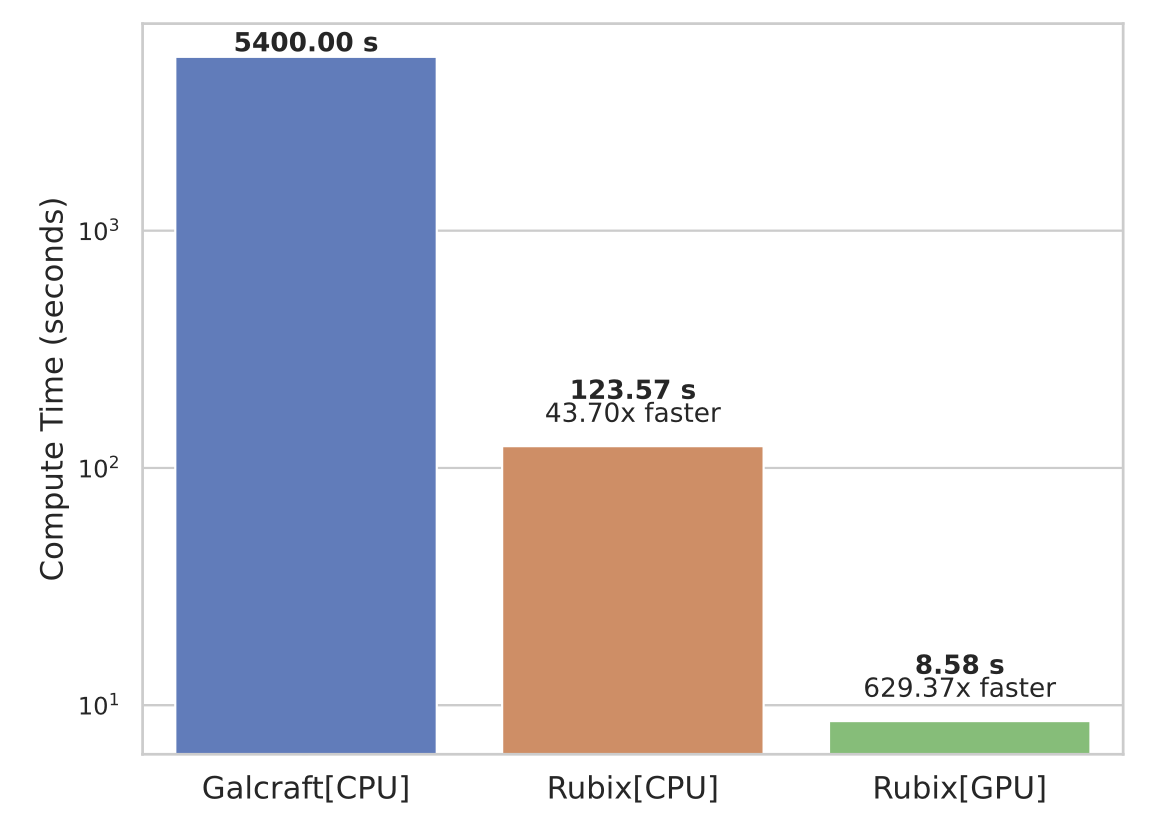🚀 RUBIX — GPU-Turbo Forward Modeling for IFU Data Cubes
Fast, JAX-powered & auto-differentiable
📄 Read the paper
| 💡 Why it matters | 🛠️ What RUBIX does | ⚡ How fast? |
|---|---|---|
| Bridging the gap between simulations and observations of galaxies | End-to-end pipeline in JAX that turns hydro-sim data into realistic IFU cubes | 600× faster than GalCraft on an NVIDIA A100 |
| Enables gradient-based ML & simulation-based inference | Runs natively on multiple GPUs with pmap + XLA |
From 1.4 h → 8.6 s for a 6M-particle galaxy |
| Open-source, modular, fully tested | Auto-diff through every step (SSP lookup → Doppler shift → PSF/LSF → noise) | Scales to 8 GPUs (needs tuning for perfect efficiency) |
🔍 Key ingredients
- ⚡ Vectorised kernels (
vmap) — no slow Python loops - ⚡ Just-in-time compilation — XLA fuses ops for extra speed
- ⚙️ JSON-driven configs — choose telescope, SSP library, distance, orientation, and more
📈 Results in a snapshot
- 📊 Reproduces expected flux & spectral gradients across galactic radii
- 📉 Strong scaling: runtime grows sub-linearly with particle number
- 🔌 Weak scaling: still room to optimise multi-GPU communication
🛤️ Coming down the pipe
- 🌫️ Gas & dust modelling
- 💡 Radiative-transfer in pure JAX
- 🔄 End-to-end neural-physics hybrids for SBI & Bayesian model comparison
⭐ Take-away
RUBIX turns hours of CPU work into seconds on GPUs and provides gradients for modern ML workflows — unlocking rapid, differentiable astrophysics! 🚀

